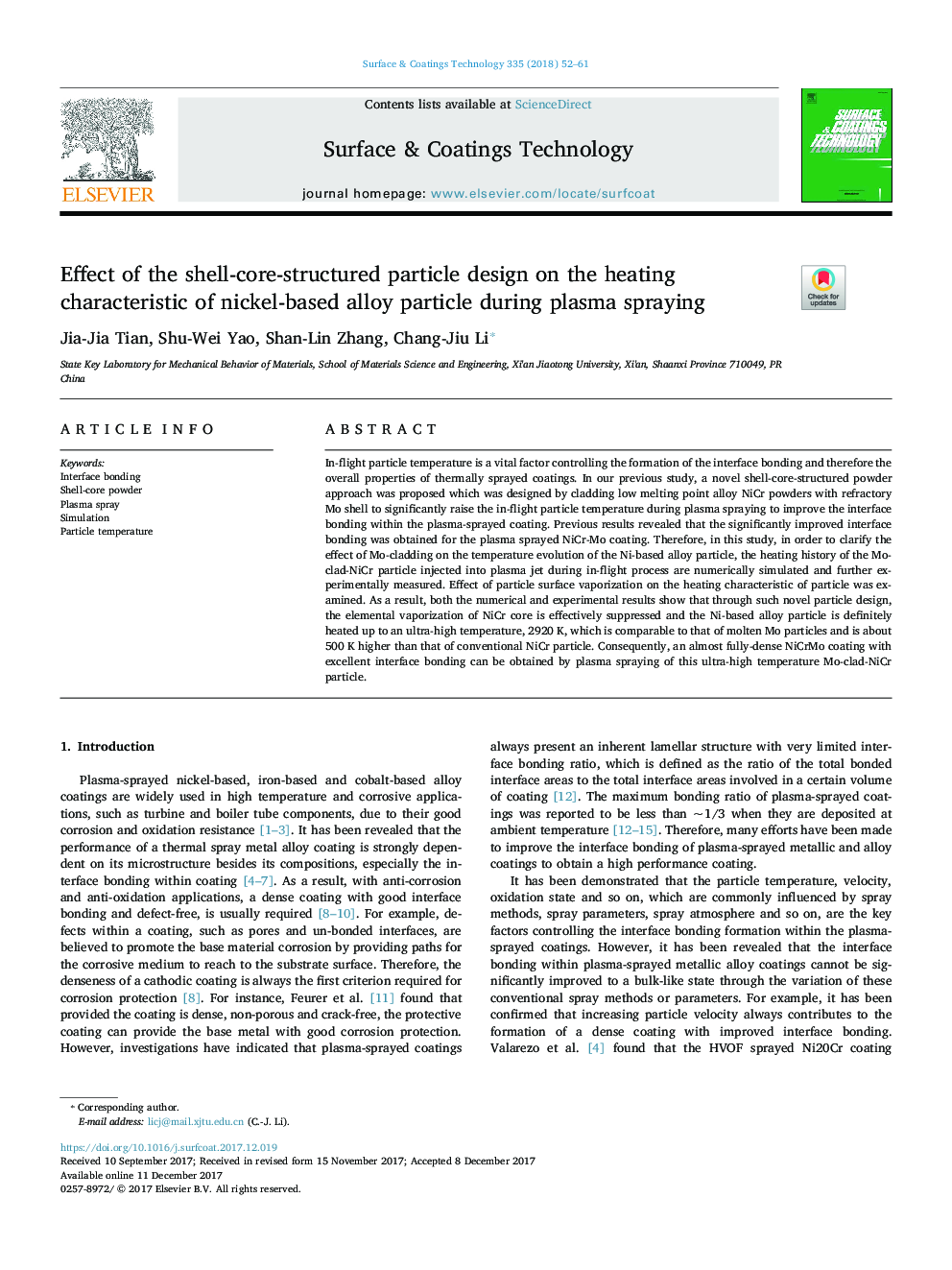| Article ID | Journal | Published Year | Pages | File Type |
|---|---|---|---|---|
| 8024346 | Surface and Coatings Technology | 2018 | 10 Pages |
Abstract
In-flight particle temperature is a vital factor controlling the formation of the interface bonding and therefore the overall properties of thermally sprayed coatings. In our previous study, a novel shell-core-structured powder approach was proposed which was designed by cladding low melting point alloy NiCr powders with refractory Mo shell to significantly raise the in-flight particle temperature during plasma spraying to improve the interface bonding within the plasma-sprayed coating. Previous results revealed that the significantly improved interface bonding was obtained for the plasma sprayed NiCr-Mo coating. Therefore, in this study, in order to clarify the effect of Mo-cladding on the temperature evolution of the Ni-based alloy particle, the heating history of the Mo-clad-NiCr particle injected into plasma jet during in-flight process are numerically simulated and further experimentally measured. Effect of particle surface vaporization on the heating characteristic of particle was examined. As a result, both the numerical and experimental results show that through such novel particle design, the elemental vaporization of NiCr core is effectively suppressed and the Ni-based alloy particle is definitely heated up to an ultra-high temperature, 2920Â K, which is comparable to that of molten Mo particles and is about 500Â K higher than that of conventional NiCr particle. Consequently, an almost fully-dense NiCrMo coating with excellent interface bonding can be obtained by plasma spraying of this ultra-high temperature Mo-clad-NiCr particle.
Related Topics
Physical Sciences and Engineering
Materials Science
Nanotechnology
Authors
Jia-Jia Tian, Shu-Wei Yao, Shan-Lin Zhang, Chang-Jiu Li,
